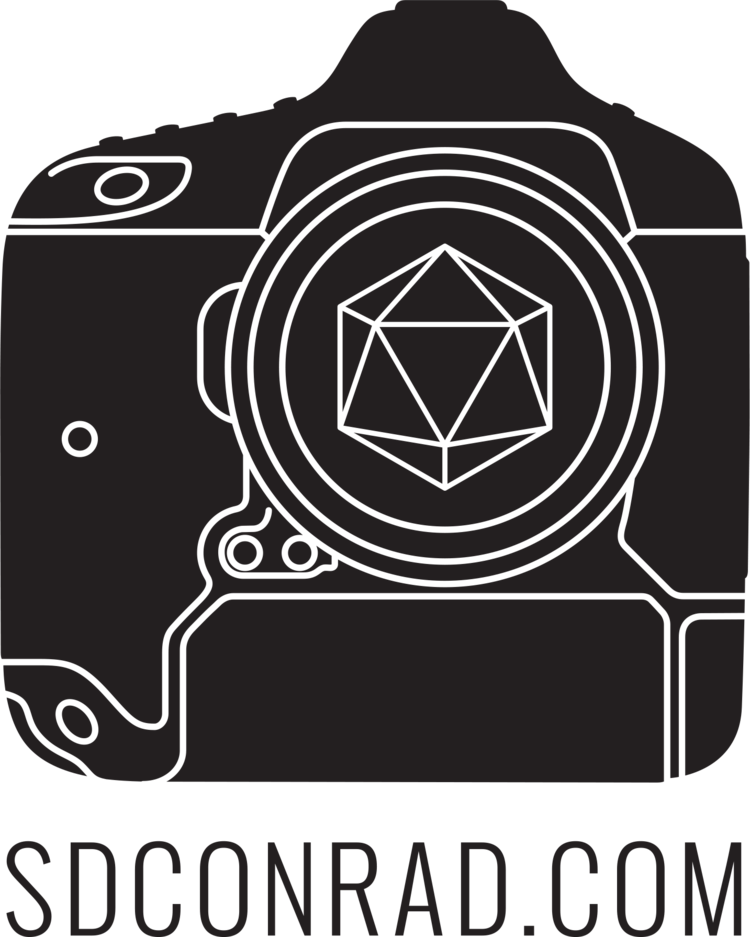I shoot a lot of live shows, either for fun or professionally. I love the live experience and I'm very rarely disappointed when seeing any live band or someone performing live. Something about the experience of seeing someone do their thing excites me. I've been going to shows since I was a teen, even playing a few bands along the way, and during that time I'd sometimes borrow my school's video camera and I'd record shows. For no real reason, I just liked being behind the camera and liked live shows, so I married the two interests and that has carried on with me 15 years later.
When I was a kid, lighting wasn't a thing. I went to a lot of shows in basements or in crummy, low-budget venues, where the lights were literally an exposed bulb hanging from the ceiling, or work lights. Pro lighting equipment is expensive! Even amateur show lights are expensive! Until now...
LED lights have been popping up in every venue. They're cheap, safe, don't generate a lot of heat, and are pretty damn bright and vibrant. They're great for a budget venue not looking to break the bank on lighting and maybe, HOPEFULLY, spend a little bit of those savings on sound equipment. The problem is, for photographers, something about LED lights look insane on digital censors.
The above picture is from a few weeks ago when I went to C'Mon Everybody in Bushwick to see my friends We Are the Wilderness. This particular photo isn't the best example of how LED lights mess with an image but you can see how the detail in Shanda's face is softened by the light. The hope of bringing natural skin color back is totally out of the question. But you don't always want to white balance that way at a live show, part of the experience of the live show is the colorful lights. But I want that texture to come back. The easy solution for me is to make it black and white and go from there.
This is what I came up with. Overall, the LEDs weren't an issue to work with. The real issue is when someone is using a lot of different color LED lights and trying to recreate white light. Or just aren't even trying to recreate white light and they're just cranking everything they have up to 11.
Again, this isn't the worst example I have. I don't want to share my worst examples because I don't want to ruin relationships with venues, I think it would make me look bad just as much as them. But this is a situation I run in to frequently. These lights don't look like this to the naked eye. No matter how I white balance my camera at the show, I end up with a wash of colors to contend with. For this show I try to bring it back to natural skin tone/white light, because it's an "intimate" show with a lot of jokes and talking. Not really the type of place I'd expect to see wild rock n' roll stage lighting. The problem here is, there are so many colors, you can't just do an overall image white balance. I started my white balance by using my White Balance Selector tool on Nat's collar. This got me close to my final white balance, but it still needed a lot of work.
Colors... colors everywhere. But his skin is starting to return to his natural skin color. The issue now is taking the final steps to get his skin back to normal and getting the backdrop to turn white. But yellow/red/orange, are all colors that you find mixed in with Caucasian skin. The background is also yellow/green/blue something. If I adjust yellows, I'm going to be adjusting both the background and the skin. While editing I was constantly going back and forth between all these different colors, adjusting hue and saturation, until I ended up with something I decided was reasonable, but still not perfect.
This is where I ended up stopping. It's about as natural as I could make it but it still has a bit of the live show charm. There's a point where you just have to stop editing otherwise you'll end up editing for days. I'm not saying I gave up, far from it. I'm happy with the final picture even though I see things that bother me. But perhaps the viewer won't see those things? As a matter of fact, I know the average viewer will not point out the flaws that I see. They might even see other things that are flawed with the final picture! But I did the work I set out to do and I believe I succeeded. It's a wrestling match with LED lights and you can't expect to walk away from the fight without a few wounds. But with each edit I do with LED lights I learn something knew about them and I use it for next time. As lights evolve, so should the photographer. LED lights are here to stay, so we have to adjust.
